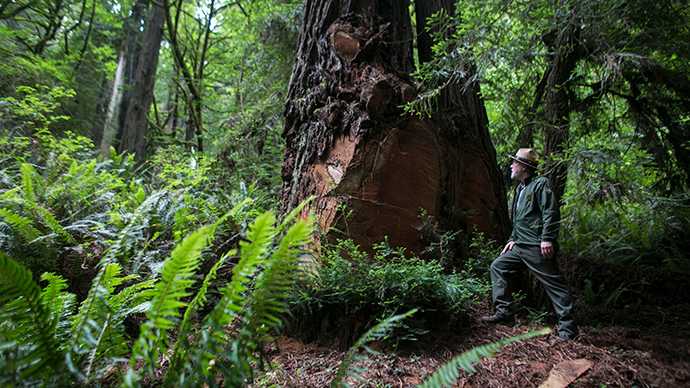Scientists blame climate change for world’s biggest trees dying

New research carried out over 90 years has found that up to half of California’s iconic big trees have disappeared, with scientists suspecting climate change as the prime reason.
The report published in the journal of the Proceedings of the National Academy of Sciences examined changes in the number of large trees – two feet in diameter or more – between data gathered in the 1920s and 30’s and the first decade of this century.
The research covered all of California and found that all areas had seen significant declines with up to 75 percent of the big trees dead in some southern part of the state.
Scientists suspect that climate change is the biggest factor as large trees are much more susceptible to drought than small ones. Other factors including logging were also blamed for their decline.
Although the authors were clear that in national parks where there has been no logging, but which were situated in the south of California which has suffered long term drought, big tree loss was dramatic but in the north of the state which has not experienced significant drought, even in areas where logging is allowed, the decline of large trees was not significant.
The result is that some of California’s iconic trees, such as the redwoods and ponderosa pines are dying off at an alarming rate.
“Older, larger trees are declining because of disease, drought, logging and other factors, but what stands out is that this decline is statewide. Based on our data, water stress helps to explain the decline of large trees. Areas experiencing declines in large-tree density also experienced increased water stress since the 1930s,” said lead author of the report Patrick McIntyre, of the University of California in Berkeley.
Scientists are not certain why larger trees suffer more from dry conditions, but they suspect it’s because they need more water than smaller ones to withstand drought and disease.
Big trees are much more important to the ecosystem than small ones as they provide food and shelter for wildlife and suck carbon dioxide out of the atmosphere.
“There’s no question that if you are losing large trees, you are losing standing carbon in the forest. Loss of these big trees and the impact of drought stress become a big concern going forward in terms of its impact on the carbon cycle; they can turn a carbon sink into a source of carbon released into the atmosphere,” said co-author David Ackerly.
However, the study found an increase in small trees right across the state as well as increased dominance of oak trees over pines, which are more resistant to drought.
They predict that the process will continue as the average annual temperature is expected to increase by up to 5 percent by 2100, with a corresponding increase in water reduction of 30 percent.












